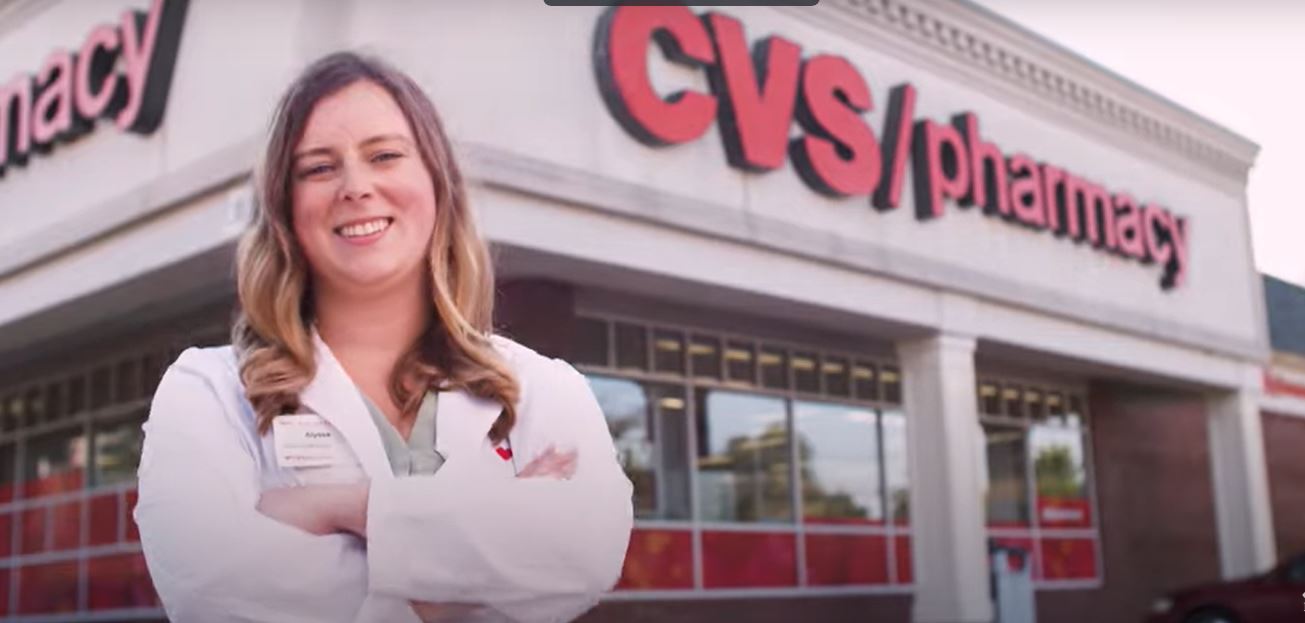The U.S. insurance industry is suffering from increasing medical expenditures, which is why CVS Health lowered its full-year profit target and posted first-quarter sales and adjusted earnings that fell short of forecasts on Wednesday.

The company’s shares fell 18% in early trading on Wednesday.
The network of drugstores reduced its earlier projection of at least $8.30 per share to at least $7 per share in adjusted earnings for 2024.
LSEG conducted a survey of analysts, and they predicted full-year adjusted earnings per share of $8.28.
Along with this, CVS lowered its unadjusted profit outlook from at least $7.06 per share to at least $5.64. The company stated that the higher medical expenditures it saw in the first quarter of its insurance business are assumed to continue throughout the year in its revised outlook.
Health insurer Aetna is owned by CVS.
Nevertheless, according to a statement from CVS CEO Karen Lynch, “our company’s long-term earnings power, enthusiasm, or opportunities are not diminished by the current environment.”
“We have a pathway to address our near-term Medicare Advantage challenges,” the spokesperson for CVS stated with confidence.
Medical expenditures have increased for insurers like Humana and UnitedHealth Group as more Medicare Advantage members visit hospitals for treatments they postponed during the pandemic, like hip and joint replacements.
For many years, Medicare Advantage—a privately managed health insurance program that Medicare contracts with—has been a major driver of the insurance industry’s expansion and financial success.
However, investors are growing increasingly worried about the uncontrollably high costs linked to those plans, which provide coverage for over 50% of Medicare enrollees.
Based on an LSEG survey of analysts, the following is a comparison between what CVS reported for the first quarter and what Wall Street was expecting: $1.31 adjusted earnings per share compared to $1.69 projected income: $88.44 billion as opposed to $89.21 billion anticipated.

This is in contrast to net profits for the same time last year, which were $2.14 billion, or $1.65 per share. After deducting specific costs like capital losses and amortization of intangible assets, adjusted earnings per share for the quarter came to $1.31.
CVS reported $88.44 billion in sales for the quarter, over 4% more than the same time last year.
Its pharmacy division and insurance segment were the main drivers of that growth.
In the meantime, CVS reported a drop in sales for the period in its health services business, which included Caremark, the pharmacy benefit manager.
The company stated that the loss of a big, undisclosed client was the primary cause of that.
Tyson Foods said in January that it will no longer be managing the prescription benefits for its 140,000 employees through CVS Caremark, opting instead to work with PBM startup Rightway.
That occurred many months after Blue Shield of California, one of the biggest insurers in the most populous state in the union, likewise shook hands with Caremark and forged an alliance with Amazon Pharmacy and Mark Cuban’s Cost Plus Drugs.
These choices add to the turmoil in the healthcare sector, where larger PBMs are under pressure to alter their own business models by startups that promise openness and lower costs.
The first-quarter results coincide with CVS’s ongoing efforts to evolve from a significant pharmacy chain into a sizable healthcare organization.
With its roughly $8 billion acquisition of healthcare provider Signify Health and its $10.6 billion acquisition of Oak Street Health, which runs senior primary care clinics, CVS has intensified that effort over the past year.
Pressure on the Insurance Department
Revenue from CVS’ health insurance business came in at $32.24 billion for the quarter, up more than 24% from the company’s first quarter of 2023.
The division offers Aetna dental and vision policies in addition to coverage for Medicaid, Medicare Advantage, and the Affordable Care Act.
Sales for the quarter exceeded analysts’ projection of $30.69 billion, according to StreetAccount.
However, the insurance sector’s first-quarter adjusted operating income was only $732 million. According to FactSet, that is far less than the $1.19 billion analysts had predicted.
The segment’s medical benefit ratio, which compares all medical costs paid to premiums received, went from 84.6% to 90.4% in the previous year.
A lower ratio usually means that the business was more profitable since it received more money in premiums than it did in benefits.
FactSet estimates that analysts had anticipated that ratio to be 88.4%. According to CVS, the “unfavorable impact” of the company’s Medicare Advantage star ratings and rising Medicare Advantage utilization were the primary causes of the increase.
Medicare enrollees can use these ratings to compare the quality of their health and prescription coverage. According to CVS, the extra day in 2024 as a result of the leap year also led to a greater medical benefit ratio.
Revenue for the company’s health services division came in at $40.29 billion for the quarter, down over 10% from the same period in 2023.
The segment offers health care services in clinics, at home, and through telehealth, as well as CVS Caremark, which bargains with manufacturers for prescription discounts on behalf of insurance companies.
According to FactSet, the sales were in line with experts’ projections of $40.29 billion in revenue for the same time period.
The loss of the unidentified customer and “continuing pharmacy client price improvements,” according to CVS, were contributing factors in the reduction.
Growth in Signify Health, Oak Street Health, and specialist pharmacy services—which assist patients with complicated diseases requiring specialized therapy—partially offset the decline.
During the quarter, 462.9 million pharmacy claims were processed by the health services division, a decrease from 587.3 million in the same period last year.
The first quarter sales figures for CVS’s pharmacy and consumer wellness segments came in at $28.73 billion, an increase of over 3% over the same period last year.
In addition to dispensing prescription drugs in CVS’s over 9,000 physical retail pharmacies, this division also offers additional pharmacy services like immunizations and diagnostic tests.
According to FactSet, analysts had predicted that the business would generate $29.5 billion in sales.
According to the corporation, higher prescription volume—which includes higher contributions from vaccinations—was the main cause of the increase.
The division’s sales were impacted by a number of issues, including lower front-store volume, the introduction of new generic medications, and pressure on pharmacy reimbursement.